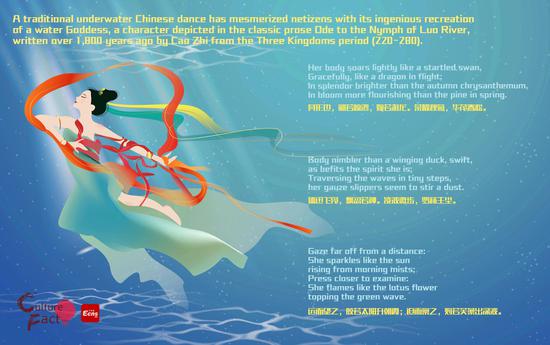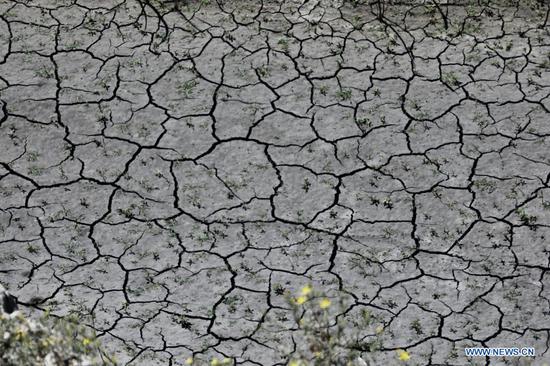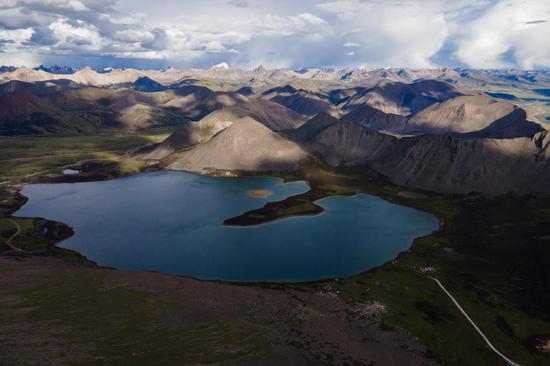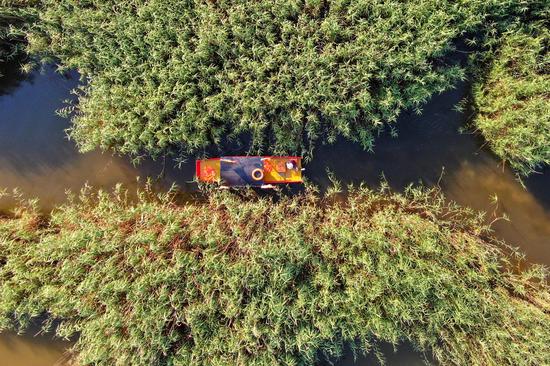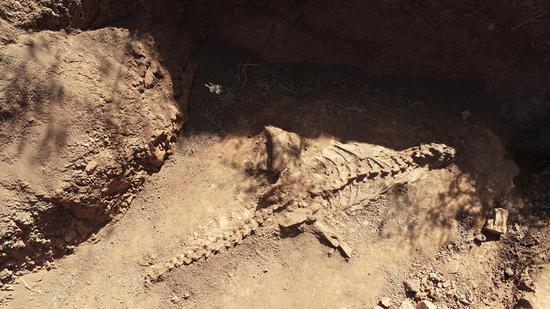
The 26.5-million-year-old giant rhino Paraceratherium linxiaensewas discovered in Gansu province recently. (Provided to chinadaily.com.cn)
A 26.5-million-year-old giant rhino was discovered in Gansu province recently.
A Sino-U.S. collaborative team discovered a complete skull of the animal — Paraceratherium linxiaense— in Gansu's Linxia Basin, led by Deng Tao from the Institute of Vertebrate Paleontology and Paleoanthropology of the Chinese Academy of Sciences. It is regarded as a species.
The species, the last of which died off 21 million years ago, is believed to be the largest land mammal that ever lived on Earth. It weighed as much as four adult African elephants, and its head could reach as high as 7 meters.
The giraffe-like behemoth, which fed on the leaves of the tree canopy, lived mainly in China, Mongolia, Kazakhstan and Pakistan. The discovery may answer questions about the animal's origin and evolution and how it crossed the Qinghai-Tibet Plateau.

The 26.5-million-year-old giant rhino Paraceratherium linxiaensewas discovered in Gansu province recently. (Provided to chinadaily.com.cn)
An analysis by Deng's team found the origin and evolution of different animal groups on the north and south sides of Qinghai-Tibet Plateau. They evolved from P. grangeri on the Mongolian Plateau, eventually to P. Linxiaensein Gansu.
Deng also explained more about the mystery of the beasts crossing the plateau. As the Middle East and western Siberia were covered by sea during the Eocene Epoch (55 million years ago), Asia was separated from Europe. This resulted in South Asia and Kazakhstan being separated by sea, hindering the migration and evolution of the giant rhinos.
In the Oligocene Epoch (from 34 to 23 million years ago), Paraceratherium migrated from the Mongolian Plateau to South Asia through some low-elevation valleys in the hinterlands of Tibet.
"Some fish and plant fossils found in Oligocene strata in the central part of the Qinghai-Tibet Plateau all exhibit tropical characteristics, indicating an elevation below 2,000 meters, which was not high enough to hinder the migration of large mammals. Paraceratherium migrated from today's Mongolian Plateau on the northern side of the Qinghai-Tibet Plateau to South Asia through the northwest area of China in the early Oligocene, while the descendants of P. bugtiense returned to Gansu and Xinjiang in the late Oligocene," Deng said.















